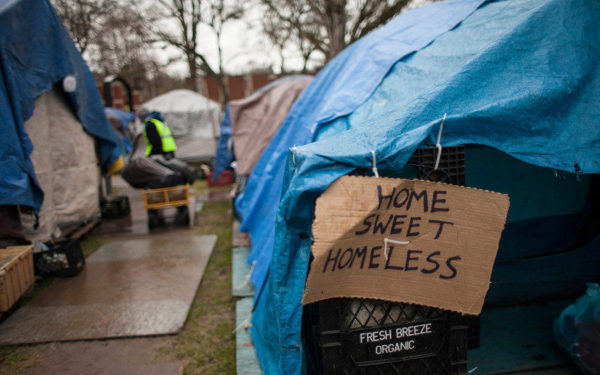Seattle spends $1.06 billion a year in a feigned effort to help the homeless, yet that money is used on programs that help companies and corporations profit from their destitution — medical visits, insurance, etc. — while it would cost only $192 million to house and care for all the homeless people in King County.
In one of the wealthiest nations in the world, homelessness still remains a big problem. Seattle might serve as the perfect microcosm of what’s going on in the nation at large. Seattle spends an estimated $1.06 billion on services for the homeless every year. More than 12,000 of those homeless call campsites home — King’s County has six sanctioned encampments for the homeless and upwards of 400 unsanctioned encampments. Even a site at one of these encampments is out of reach for many.
With the city of Seattle thriving, you’d think it would be getting easier for people to afford living there, not more difficult. However, the situation seems to be trending in a different direction. Here’s what’s going on in Seattle and other major cities around the country.
Cost of Living Climbs
The easiest way to account for increasing homelessness? Taking a look at the numbers. The average person today makes 10 percent more than they would have in 1973. So if a certain vocation tended to net $40,000 in the ‘70s, for example, someone starting out in that same field might come in around $44,000 to start. This rate of inflation might be fine if it weren’t for the fact that it’s so grossly out of proportion with how much faster the cost of living is climbing.
For instance, since 1960, the cost of health care skyrocketed roughly 800 percent, even taking inflation into account. The investment for higher education also jumped drastically. If you attend a four-year public college today, you’ll pay about triple what you would’ve paid 30 years ago. Perhaps most importantly, the cost of housing has jumped, as well. The cost of a home increased by 83 percent from 1970 to 2000, even taking into account the impact of inflation.
Armed with this information, it’s probably easier to understand why a growing number of people are living in tents or sleeping in doorways in major cities like Seattle. Over the past five years, the cost of renting a one-bedroom apartment in King County has risen by 53 percent to $1,580 per month.
If that number sounds crazy high to you, you may also find it shocking that this figure actually falls a bit short of the national average, which is a whopping monthly rate of $1,640 for a city apartment. This takes into account metropolises like New York City, where a two-bedroom typically goes for more than $3,000 monthly.
Funding Is Misallocated
As the cost of living increases and paychecks stay the same, it’s easy to see how those who end up on the streets could have easily landed there simply because their landlord hiked up the rent. It’s not that those in need have no resources: The $1.06 billion that Seattle spends on homelessness comes in the form of mental health programs, services offered by nonprofit organizations and other kinds of outreach.
However, it also factors in costs like hospital visits made by uninsured homeless people and emergency services provided by police and medics. By comparison, one nonprofit estimates that to house and care for all the homeless people in King County, it would cost only $192 million. That’s barely a drop in the bucket compared to what the city spends now. However, the funding simply isn’t going to the right places. It’s being spent on putting out fires, not preventing them.
The Problem of Miscommunication
The main problem, it seems, is miscommunication among nonprofit organizations, city officials and other parts of the government. Six major cities — Atlanta; Denver; Eugene, Oregon; Nashville, Tennessee; Portland, Oregon; and Seattle — are all seeing a significant surge in the cost of living. However, they do not see the same surge in average income. The solution lies in helping the homeless find safe shelter and providing them with any health services they may need, including mental health.
Seattle, specifically, is still falling short of this goal due to its leaders’ inability to work together to funnel their funds into a single cohesive project aimed at eliminating homelessness. As Seattle Mayor Jenny Durkan puts it, “We are this prosperous city in the most prosperous country in the world, and yet we have thousands of people sleeping in tents and doorways. We need to do better.” So do most of the other major cities sprinkled across the U.S., from Atlanta to Portland.
With the proper combination of talent, vision and funding, homelessness in America could eventually become a thing of the past. It’s just a matter of those with the knowledge — such as nonprofit organizations who’ve been helping with homelessness for decades — collaborating with those in power, like governing officials. Together, their power could change the face of major cities across the country.
Maybe there’s a way you could play a part in your city. Check out local nonprofits to see where you could get involved.





Thank you for this very necessary reporting. An excellent article that I hope will encourage further investigation.
Thank you very much, I’m glad you liked it!